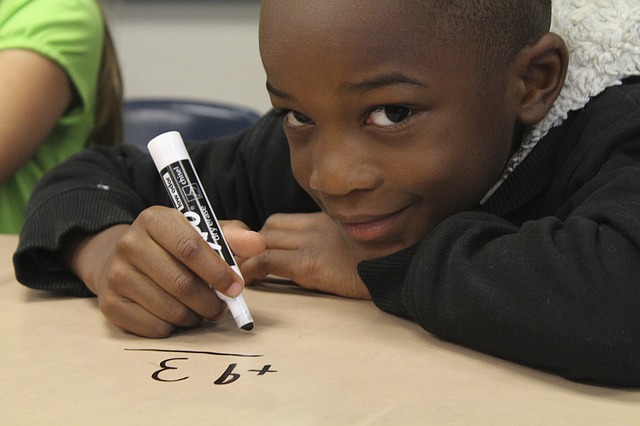Number theory is a branch of mathematics that has almost no practical application. But many of its concepts are simple, fun to play with, and accessible to a child who knows the basic arithmetic operations. The concept of a prime number — and factoring a number into its primes — often plays a role.
Here’s an example that uses, additionally, the idea of a perfect square: Just as the integers can be divided into the two classes, even and odd, the odd integers can be divided into two classes: those which, when divided by 4, leave a remainder of 1 (namely 5, 9, 13, 17, etc.), and those which leave a remainder of 3 (3, 7, 11, 15, etc.). Numbers in the first class, if they’re prime, can always be written as the sum of two squares. For example, 5 = 22 + 12, 13 = 32 + 22, 29 = 52 + 22. It won’t work for 9 or 21 because they’re not prime, and it won’t work for 7 or 11 because they’re not in the first class; it will work for 17 and 41, and of course it gets harder to find the two squares the larger the number. One can imagine giving this to a class either as homework, or in school as a competition or race to see who gets to the highest number, with or without skipping one, without mistakes.
The classification of numbers according to remainders is a fundamental part of number theory — called “congruences” — pioneered by Gauss in the nineteenth century.
In the next example one needs the concept of two numbers being relatively prime. This just means that when the two numbers are factored into primes they don’t have any of the same primes. Seven and 9 are relative primes even though 9 is not a prime. Fifteen and 9 are not relative primes. [Actually it’s the same concept as putting a fraction in lowest terms: If I take the two numbers and construct a fraction, the fraction is in lowest terms if the two numbers are relative primes (like 7/9). But 9/15 is not in lowest terms because I can cancel out the common factor, 3.]
Now here’s the game: One team (or the teacher) picks two relative primes; say 7 and 9. The other team has to find two numbers (any numbers) such that you can multiply one by 7, multiply the other by 9, and the two products will differ by 1. In this example my answers are 5 (7 X 5 = 35) and 4 (9 X 4 = 36). It can always be done as long as the first two numbers are relative primes. As another example take 9 and 11. The answering numbers are 5 and 4.
At one level these kinds of games offer a different way for children to practice times tables and mental arithmetic. It might also be a valuable lesson for children to consider the two remainder classes mentioned above, and to find the patterns they exhibit. Children might also think about remainder classes when you divide by a number other than 4. At another level, students and teacher might follow up games like these with a discussion of best strategies for finding solutions.
Michael Sobel is a professor emeritus of Physics at Brooklyn College.
_________________________________
Like this article? Sign up for Math Education SmartBrief to get news like this in your inbox, or check out all of SmartBrief’s education newsletters, covering career and technical education, educational leadership, math education and more.
